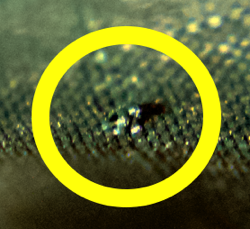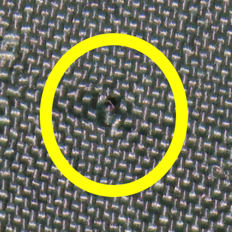

 |
 |
 |
Guest - Not logged in | |||||||||||||||||||||||||||||||||||||||||||||||||||||||||||||||||||||||||||||||||||||||||||||||
Reviews > Clothing > Jackets and Vests > Coalatree Whistler Windbreaker > Test Report by Mike LipayCoalatree - Whistler Windbreaker
Review by Mike Lipay
Initial - December 12, 2019 Field Report - March 15, 2020 Long Term Report - May 2, 2020
Initial Report - December 12, 2019 The Whistler Windbreaker is a jacket with the reported magical ability to self-heal from minor punctures. Made from the proprietary, featherweight, Hilotech material and coated with a DWR application this jacket promises to keep you protected from winds and light rain in the city and backcountry, while prolonging the life of the jacket by being able to repair minor tears in the field without the need of a patch.
Initial Impressions
Adjustments The hood has three adjustments to make a custom fit to help keep the wind out. One drawcord in the back of the hood at neck level helps to tighten up the hood around the neck/chin to bring the chin guard more in contact with the chin and narrow up the bottom of the hood. Then there are two drawcords, one on each side of the head, to make the face opening smaller. Using all three of these cords I was able to create a tight fit around my head that should effectively protect the majority of my head from cold wind and rain. The sleeves have typical elastic built into the end of the sleeve to create a snug fit around the wrists. The elastic only goes halfway around the wrist, but I find that it fits nicely around my wrists, with enough comfort that I barely notice that they are there. The final adjustment is around the waist. The drawcord is on the right side only, but still does a good job of snugging up the waist comfortably. I see two issues, the first is that the cord lock doesn’t do an adequate job of locking the cord in place, I was able to easily open the waist up just by moving my hands around in the pockets. The other issue I see is if I were left-handed, with an adjustment only on one side it would be a harder adjustment to make. Impossible, no, but harder. First Use Yesterday was a good day to try out a windbreaker. Air temps were in the 20’s with a 15 mph breeze, so any wind coming through would be easily noticeable, and it was. I could feel the air through the Whistler Windbreaker and my 300 fleece jacket, enough that I was uncomfortable standing around or moving casually. Today I tried it again, same setup, but the wind was down to around 5 mph, temps still in the 20’s. I was much more comfortable just moving around from place to place. From these tests I would say this is a moderate level windbreaker, good for spring/fall/mild winter use, but not a seriously cold winter day. I look forward to testing this further to just see the limits of its usability. DWR: Today we had a mild rain, a sprinkle more than anything. While the Whistler Windbreaker handled it with no problem it would have surprised me if any moisture had come through as the precipitation was so light. Self-repair: For initial puncture tests I tested it first with a round toothpick, then with a thicker awl. Not planning on running into either while I’m outdoors, but they are probably thicker than anything I’ll run into in nature, short of a grizzly claw. To affect the healing process the online instructions say to rub the material around the hole until it seals. The HiloTech material accomplishes this because it is a woven nylon and the rubbing moves the woven fibers back into place. Field Report - March 15, 2020 Field Locations and Conditions
Field Performance Usage Overview: I have been using the Whistler Windbreaker as my daily go-to outer layer, not just for the aforementioned hikes, but as daily wear around town. In warmer weather it has served as a rain jacket and a windbreaker; in colder weather it has become my outer layer to fend off the bitter cold. In short, it has had a lot of wear and a lot of abuse in an attempt to fully discover the wind, rain, and self-healing abilities. Jennings EEC: This was my first serious use of the Whistler Windbreaker, and what a use. The day started out around 40F (4C) with a little sun, lite sprinkles, and the promise of warmer temps by afternoon. Man, was that a disappointment, an unexpected cold front came in from the north quickly lowering temps to the low 30’s (0’s) with the rain changing over to snow. I was concerned about how the jacket would perform in this untimely change; I was pleased. It kept off the rain pretty good, the moderate showers that developed proved no challenge to the Whistler, and the stiff breeze was fended off better than I had hoped. While I wasn’t warm it was no fault of the Whistler, my inner layer was meant for a warmer event. I did not experience any condition to test the repair capabilities on this hike, but that was planned, I was more interested this time in testing the windbreaker and water resistance…I was not disappointed. Laurel Highlands Hike: This was a different test for the Whistler Windbreaker, I planned on it being the outer layer in my winter hiking gear. The weather was cold and breezy, guesstimates put windspeed in my area at 15-20 mph (24-32 kph) with gusts to 35 mph (56 kph), terrain was rugged with many climbs and descents, thorns abound. As with Jennings, the Whistler kept the wind at bay surprisingly well. I did feel a chill at the higher wind speeds but I didn’t feel cold, even when I stopped for lunch. I purposely bushwhacked in some areas so the jacket would get stuck by the thorns.complain After I got back home I inspected the jacket and found signs of the thorns sticking into the jacket, but nothing that rose to the level of having to rub the material to close up any holes. I’m not sure if this is how it is supposed to work, but I was surprised, my pants didn’t fare as well, the tiny holes could easily be seen. 

Ohiopyle:This was another case of testing the wind-breaking ability, not much in the line of barbs or thorns to deal with. The weather was cold and breezes were reported at 15-23 mph (24-37 kph), with good under layers I was quite warm and didn’t experience any wind breaking through. While I hadn’t expected any thorns I did get snagged by a piece of tree bark that I had to pass under, this was the first actual issue I ran into, the snagging caused a thread to be pulled up from the sleeve of the jacket (see photo, snags are circled), this is something that just can’t be repaired, at least not from instructions. Ah well. Note on the snags, they are hard to see because of the size, they're only about 1/8" (3 mm) across and 1/16" (2 mm) high, they don't affect the performance of the jacket, but larger ones might. Trough Creek State Park:This was a nice hike, warmer weather, but a rougher terrain than before. As with the Ohiopyle hike I did incur another snag in the jacket, another thread pulled out. Not sure if this is because of the type of material, or if it would have happened with any nylon-style jacket. The few barbs that I ran into left no signs on the jacket, no holes to repair. General Use:Off the trails this jacket has been exposed to quite a few rain showers, cold weather, as well as some (intended) run-ins with thorns and needles. The jacket has kept me dry through all but the hardest rain, I’ve had little to complain about its ability to keep the wind out, and it seems that every thorn, needle, and barb that I’ve run into has done nothing that requires actual repair. Very impressed. Long Term Report - May 2, 2020 Long-term Test Locations and Conditions Since the Field Report I have been wearing the Whistler Windbreaker any time it rains or there is a nip in the air. I’ve worn it with long and short sleeve shirts, in temps ranging from 38F to 64F, light and heavy rains, with or without a mid-layer. All usages have been in the Laurel and Tuscarora mountain ranges in the Appalachians.
Performance in the Field The jacket was almost perfect in the continued testing, with the only issue being what I had noted before: more than a moderate shower and water will penetrate the jacket. I would wear the jacket until leakage started then switched over to a regular rain jacket. Manufacturers of the DWR coatings recommend regular washing in recommended detergents to restore the coating’s effectiveness (such as Nikwax Tech Wash and Penguin Sport-Wash), as I do not have said detergents, I could not try this out. I have been more than pleased with the jacket’s ability to repair from small punctures. I’ve had needle-like thorns and pine needles puncture the jacket, after removal and a little rubbing (in the field) all was back to normal. I’ve even had rose-bush type thorns puncture as I was walking down the path, looked at the jacket with no problems. This could extend the life of the jacket by years since one of the reasons I usually replace a jacket is that the number of holes gets to a point where it becomes a functional (rain) issue, not just appearance. Now, if they could only make shirts and pants like this! Summary Overall I have been impressed with the Whistler Windbreaker. Its ability to shed off sprinkles to mild rain is very good (not a rain jacket so I wasn’t surprised when heavy showers got through). As a windbreaker it’s been a pleasure to wear, I think I’ve found my outer layer for the fall-winter-spring seasons (so long as heavy rain isn’t predicted). Finally, its ability to self-repair is impressive, barbs, thorns, and needles that would have left holes in other jackets have gone by unnoticed; the only issue is that popped threads from snagging does seem to be a problem. Things I like:
Suggestions:
Continued Use Without a doubt I will continue to use this as an outer layer and just as a jacket when a windbreaker or light raincoat is needed, for as long as it continues to self-repair. After that I will seriously consider purchasing a replacement (hopefully with some of the above suggestions incorporated). Acknowledgement This ends my Long Term Report, I’d like to thank Coalatree and BackpackGearTest.org for the opportunity to test this nice windbreaker. Read more reviews of Coalatree gear Read more gear reviews by Mike Lipay Reviews > Clothing > Jackets and Vests > Coalatree Whistler Windbreaker > Test Report by Mike Lipay | ||||||||||||||||||||||||||||||||||||||||||||||||||||||||||||||||||||||||||||||||||||||||||||||||